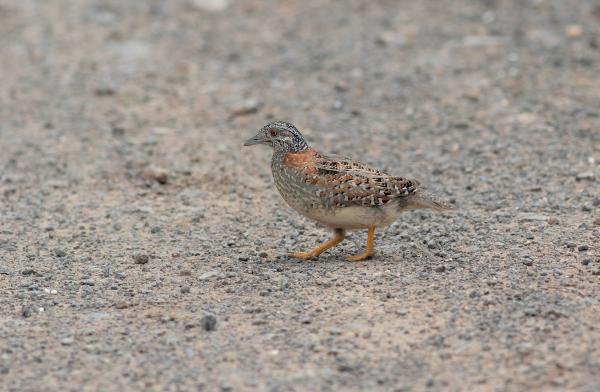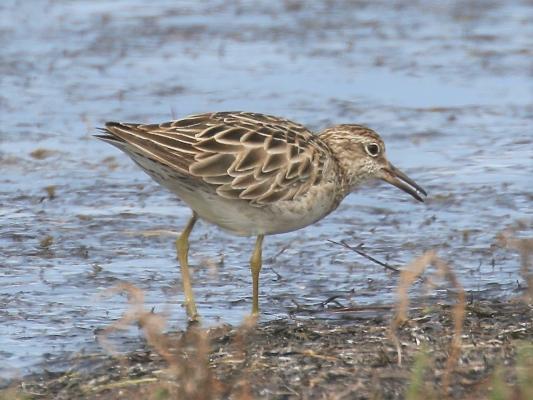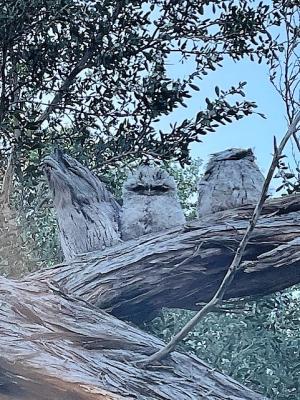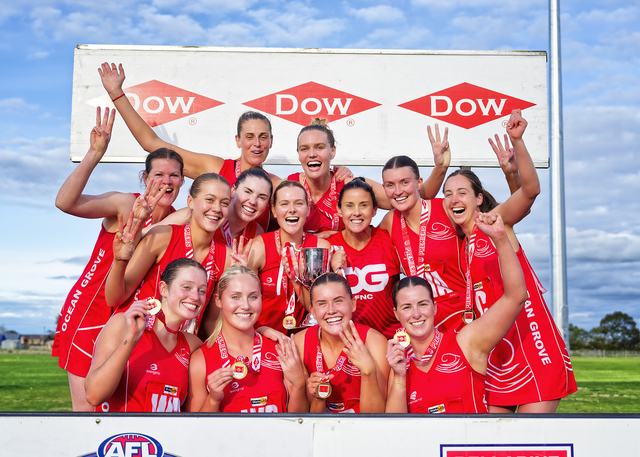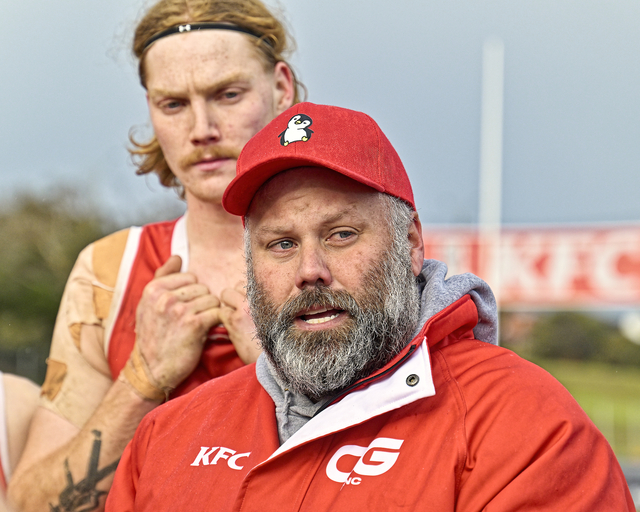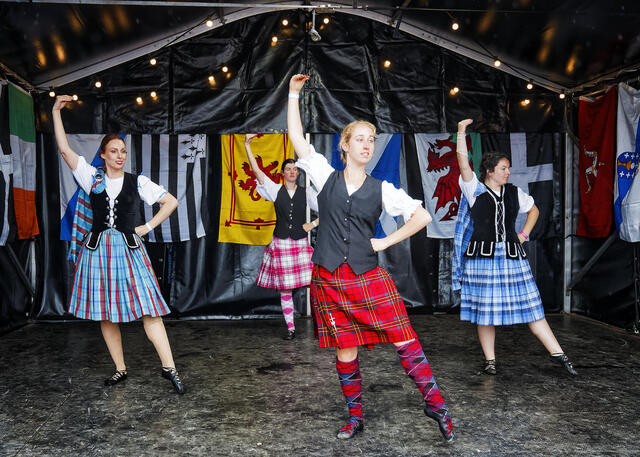We have had some lovely, sunny spring days over the past few weeks, mixed in with an almighty storm that flattened many majestic trees around the district.
No doubt many bird nests were disturbed and blown off branches, which created much angst for me on the day.
On this subject I received an email from Carole, who lives in St Leonards. She described the plight of a tawny frogmouth and two hatchlings that had a nest in the local area.
Carole received a message from birdwatcher Rosalind who also lives in St Leonards. After the wild stormy and windy weather Ros and other locals found two little tawny fledglings on the road.
Their home was a huge eucalyptus tree which had crashed down in the storm. The chicks were rescued from the road and placed on the branch of a nearby tree. The good news is they were soon joined by their parent birds and seemed to recover from their experience.
Ros was keen to convey that she didn’t act alone in caring for the frogmouths, as it was a neighbourhood effort. The latest report is that both mum and dad are caring for the family and they are healthy and surviving.
Carole also emailed me to describe a pair of Australasian grebes building a nest at Blue Waters Lake.
Carole watched the pair building the nest and described how the female bird bossed the male bird when he didn’t put the nest building reeds in the correct place, so she rearranged it (no comments are required here about bossy females).
Carole watched the pair build their reed nest in the water over the course of two days, which surprised Carole that such a ramshackle nest could be made, and deemed sea worthy, in such a short time. Carole also observed that two eggs were laid after the nest was completed.
I received an email from Geoff, who was having a coffee at Napona near the Ocean Grove Park, when he noticed a lorikeet coming out of a nesting hollow.
The lorikeet was a musk lorikeet, which are commonly seen around the Bellarine. I must go to Napona with my camera and see if I can spot a few fledglings while indulging myself with a chai latte.
I also received a few emails from Kevin, who has been out and about with his wife Anne Maree.
They visited Blue Waters Lake, which Kevin described as being devastated by the recent storm. They spotted 19 maned ducks (or Australian wood ducks), and six Pacific black ducks all feeding together, as well as young families of ducks, swamphens and dusky moorhens.
There were also about 17 great cormorants on one of the platoons. On the way home, they came across about 25 spoonbills feeding in the Barwon River Estuary river shallows, with no sign of any migratory waders.
I spotted two common greenshanks near the boat ramp at the estuary about a week ago, so they are a few migratory waders around, but not in good numbers at all.
Kevin saw two migratory waders, namely sharp-tailed sandpipers at Swan Bay Jetty, as well as a few pied or black-winged stilts.
I saw a new bird (for me) on the Bellarine over the last few weeks, so my Australian bird list is inching slowly to the 500 mark. I was driving dear Swan Bay and turned down a dirt road, as as I did I berated myself as I thought that the road might be blocked from falling trees from the storms, and I
didn’t want to become stuck on a backroad.
However, I soldiered on bravely, and about half way down the road a small bird was walking in the vegetation on the side of the road. At first I thought the bird was a fledgling that had fallen out of a nest, as I didn’t recognise its plumage.
However this beautiful bird continued to just forage near me, and I realised that it was a quail, but smaller that a brown quail or stubble quail that I am familiar with.
The bird was a painted button-quail and I managed to take a few photos out of the car window before it wandered off.
I was on a high from this when I continued down the dirt road, and two of my favourite birds – namely wedge-tailed eagles, were soaring only about five metres from the car, so going down the dirt road was a great decision indeed.

